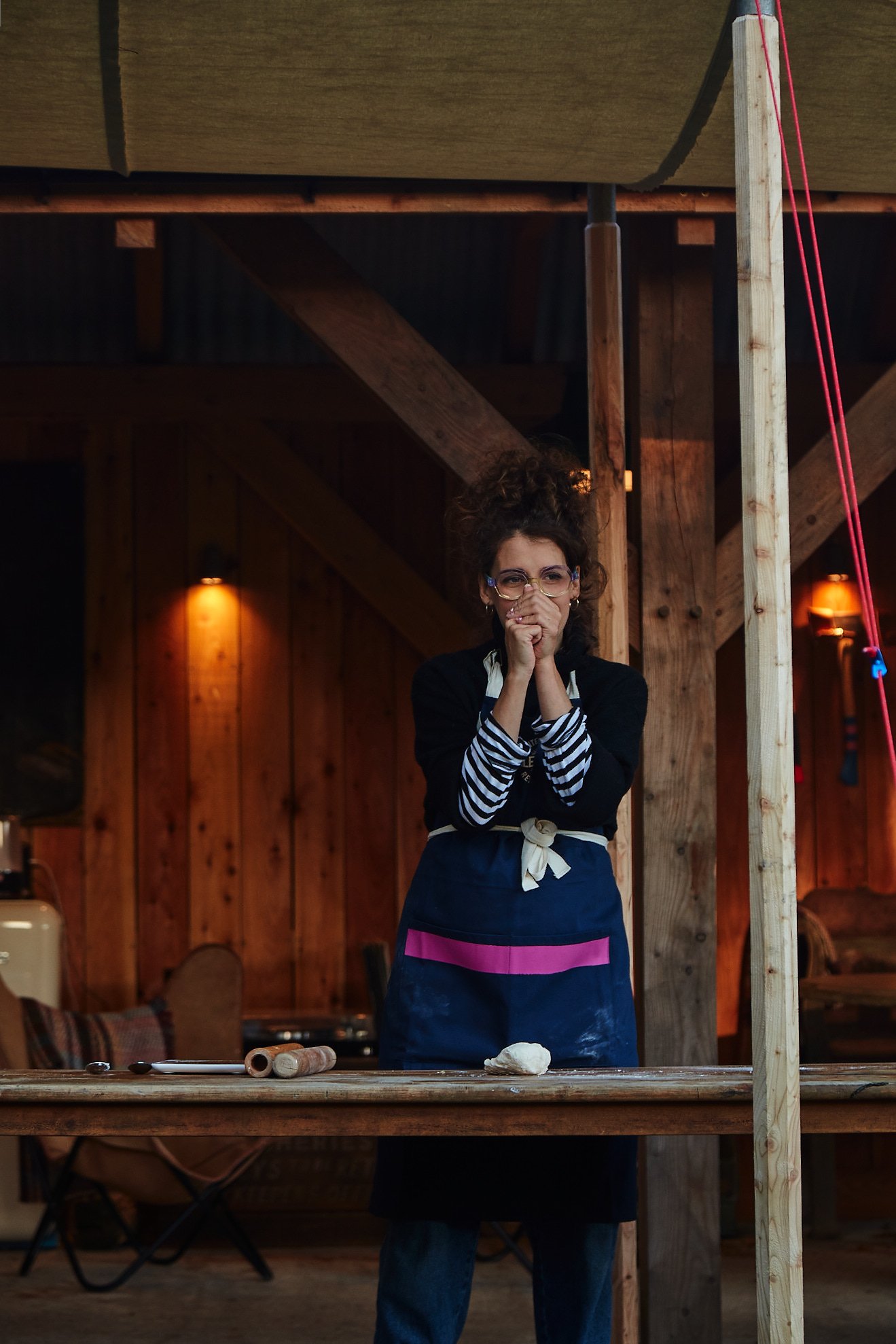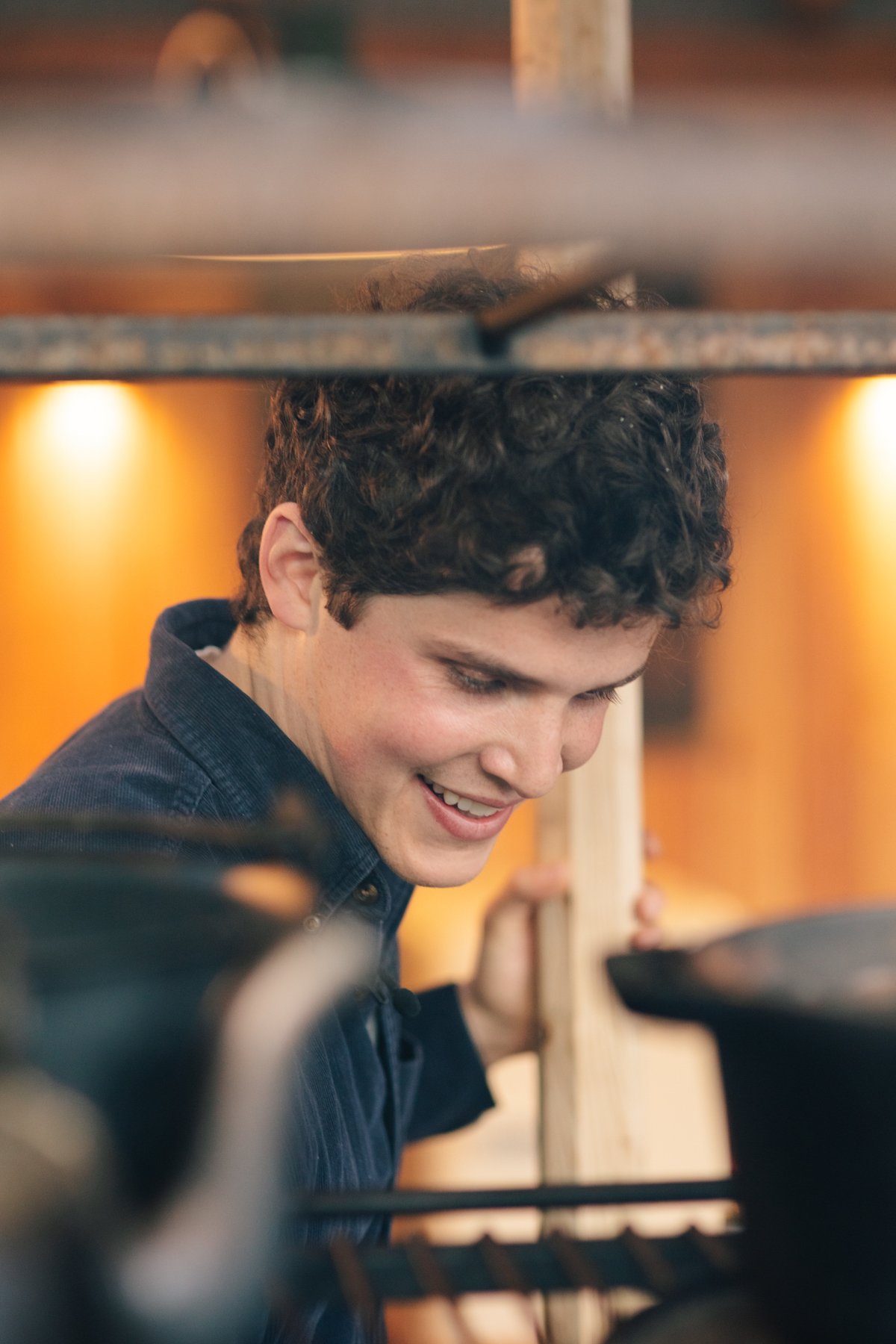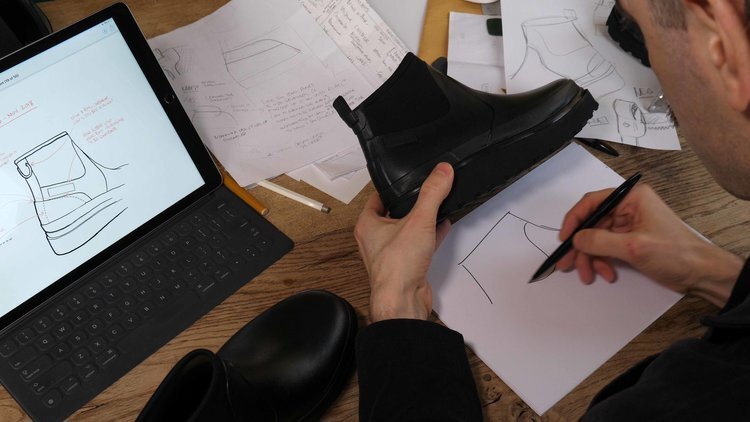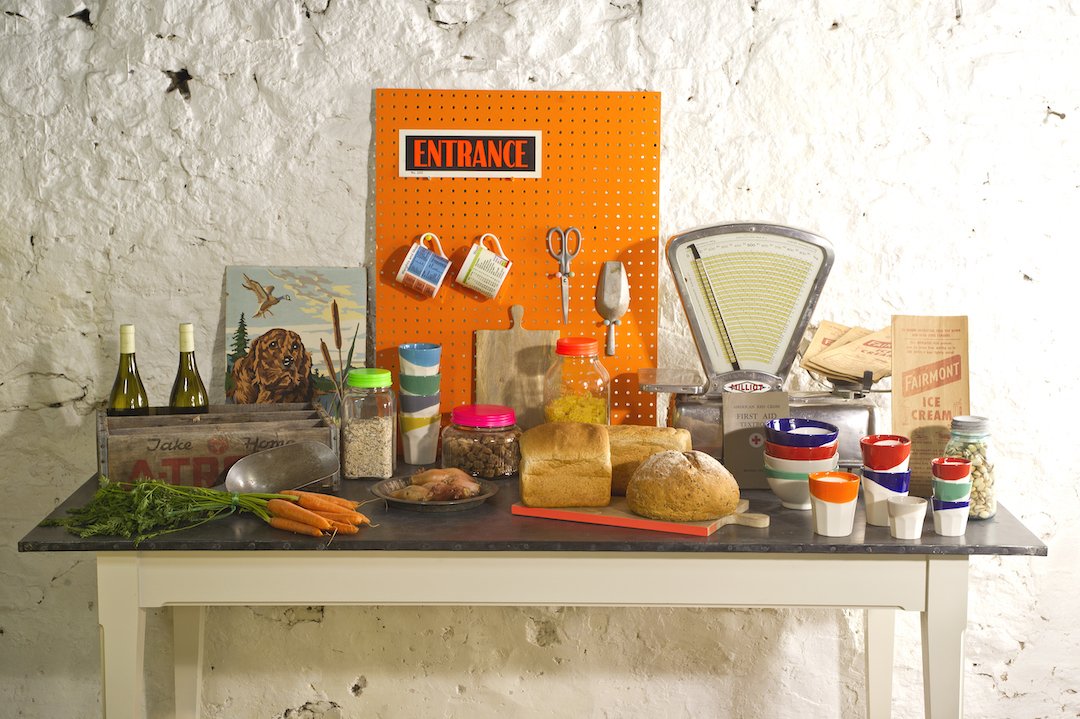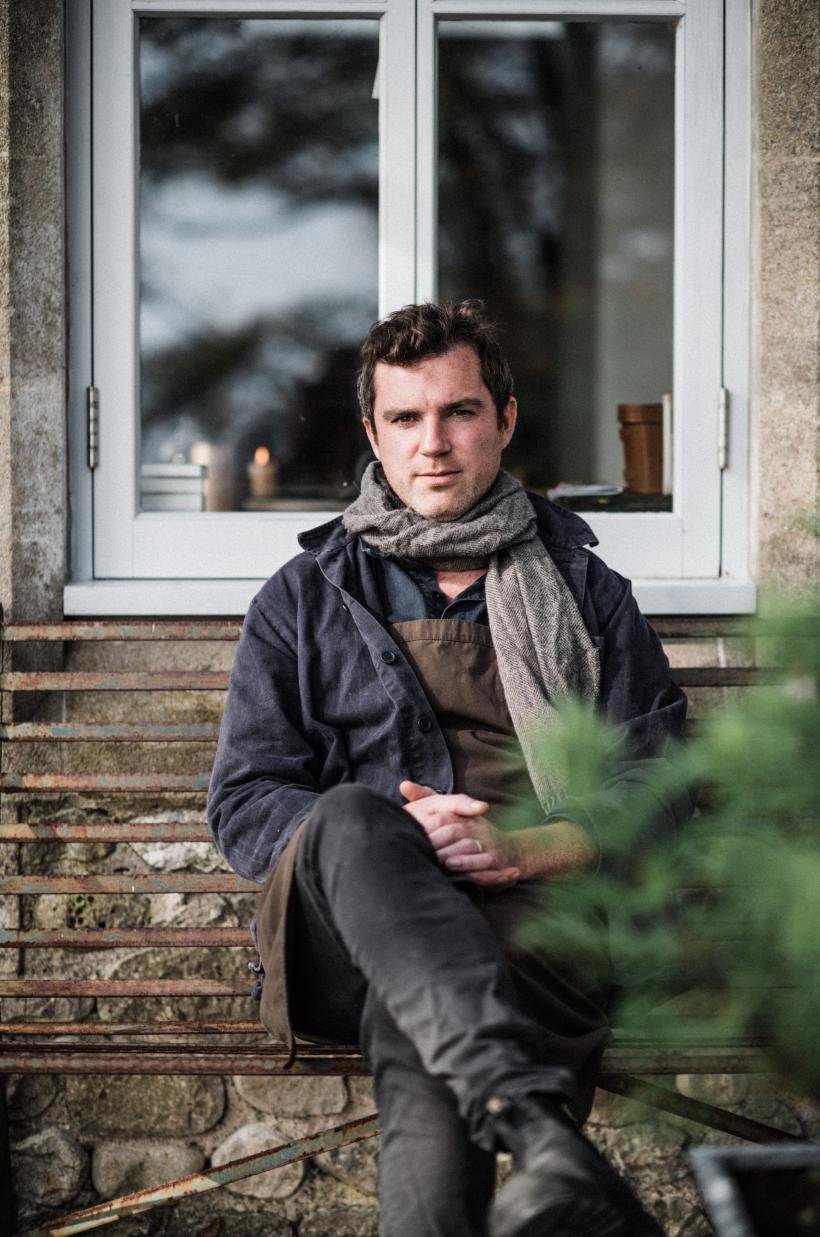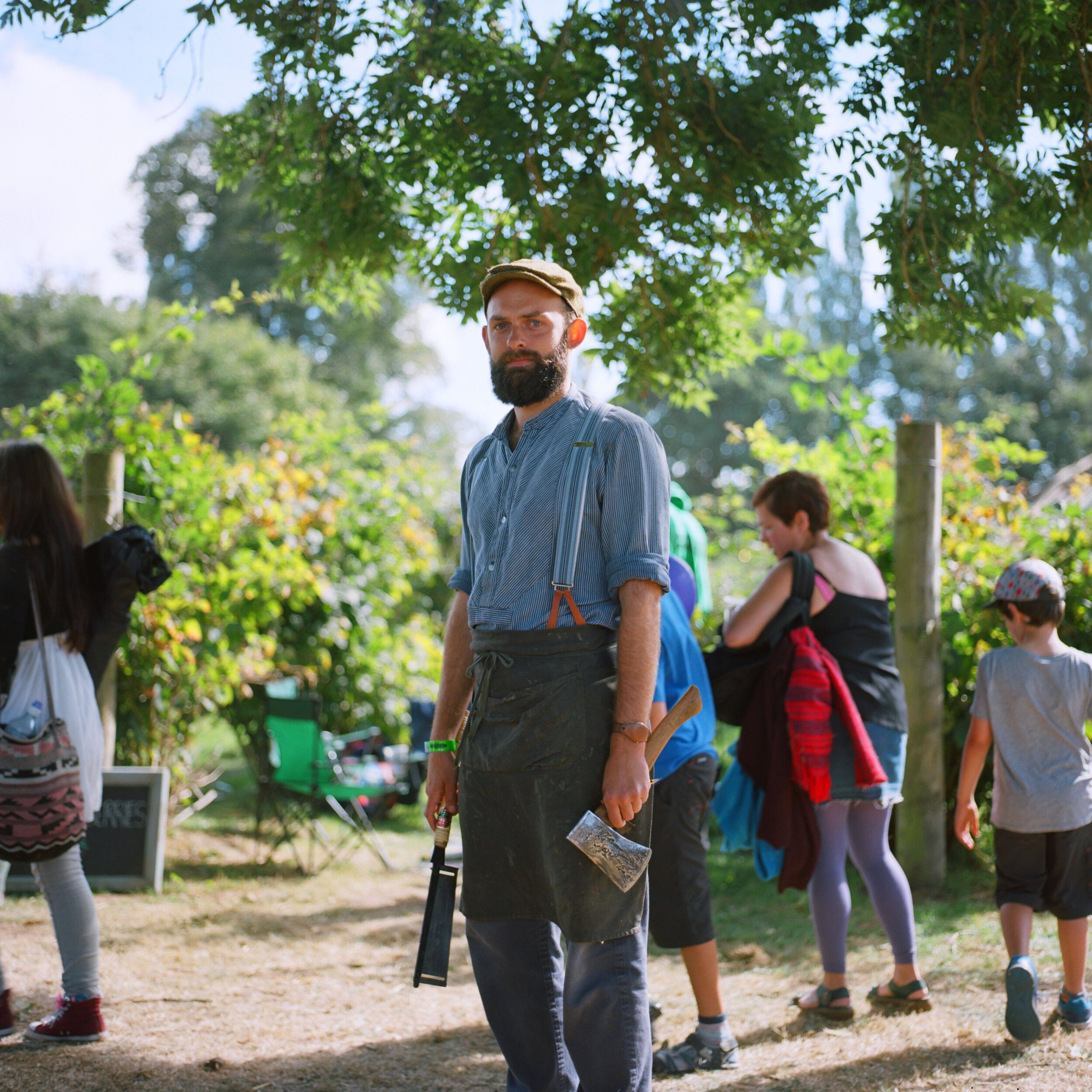A Potted History The Axe & How To Make One.
BY ALEX POLEImage: Department TwoAlex Pole’s lifelong passion for metal work combined with his expert skill -gained over his thirty years- in the profession, makes him the ideal person to inform us.
Axes are the oldest tool known to mankind, forming civilisation as we know it. With this most versatile tool we have built, fed and defended ourselves. Today its importance is still recognised and it remains a symbol of strength, survival and skill.
There are few things more satisfying -to me anyway- than strolling down to the orchard adjacent to my workshop, axe in hand, looking for a recently fallen apple tree to chop up.
It’s not only the physical effort but also the mental stillness that follows, which is the perfect stress relief (and provides plenty of material for our knife handles, as well as great firewood).
Forging the axe that accompanies me through the orchard adds something else special to the whole process. Making tools that we can use on a daily basis, making tools to make the axes, making the tools that we need in life, these things have become my craft, my business and my obsession!
Mankind has used axes since the early stone age, approximately 2.5 million years ago, and has been refining the design ever since. The first hand-axes were roughly chipped oval pieces of stone used mainly for digging and for butchering animals and not until much later was a handle attached. Two types of handled axes began to develop; one was a solid piece of hewn stone* fixed by cordage*, sinew* or resin* to a smooth piece of wood. The other had a shaft- hole drilled through the stone to which the handle could be fitted. These axes were the precursor to the Bronze Age ones and were used for much more complex functions such as boat building, warfare and ceremony, up until around 2000 BC.
So, how do you forge an axe head?
Heat the steel to between 950-1000 degrees before punching a hole through the steel with a type of chisel called a drift. Then start forming the eye. The eye is where the handle will fit into the axe head.
The eye and cheeks are forged out further. Forming the eye is one of the most crucial stages of the whole process. This is the stage that will determine the style of axe.
The bit and the edge are now forged out to the correct pattern by repeatedly heating striking on the anvil. This can take anywhere from 1-4 hours.
Refinement and alignment of the whole piece is followed by stamping the smith’s touch mark -ensuring the quality and showing the maker. This stage makes sure that the axe is perfectly straight and has the correct shape to finish.
Now the axe is ready for the heat-treating stage though hardening and tempering. First is hardening, where the steel is heated to 820 degrees Celsius before it is quenched in oil, this makes it extremely tough but also very brittle. The tempering stage removes the brittleness but keeps its hardness by heating the steel to 180 degrees Celsius for an hour to “relax” the steel.
Then fine grinding of the edge and sharpening.
Handle and sheath fitting. This is sometimes underrated as a process but often determines the difference between a good axe and a great axe.
There are two primary ways to forge a steel axe; laminate or mono-steel.
Both have their advantages and disadvantages.
Forging a laminate is -in a way- the more traditional approach and involves welding two separate pieces; a larger piece of iron with a smaller piece of high carbon steel for the cutting edge. This is an extremely advanced technique.
Carbon steel was highly valued in medieval times. It was difficult to produce and was generally imported from the Far East (Damascus). Using the minimal amount of this prized material was the aim of the smith. Therefore, they developed the technique of inserting a wedge of carbon steel into the edge of the iron body of the axe. The main bulk of the axe was forged to shape using a softer, cheaper material and then a piece of the valuable carbon-steel was welded to make a cutting edge that could be hardened and sharpened.
This technique is still widely used although more to show respect to the traditional craft and the smith’s technical ability than to preserve the high-cost material (although many would argue a laminate axe has better properties than a mono-steel axe).
The mono-steel method is the second -more common- way to forge an axe head, using a single, larger, piece of carbon steel. Something roughly like the size of a pack of butter is used for a 2lb axe.
Modern steel production has allowed what was once a high-value material to become more easily affordable. And a wide range of different alloys offers more choice. My preferred steel is EN9 (1060) with a .6-.7% carbon content. It’s relatively basic to forge, forgiving in the heat treatment and holds a great edge whilst being easily able to sharpen.
Using a steel with a lower carbon content also gives the axe a bit more spring being less brittle and therefore less likely to chip. The disadvantage of the mono-steel method is that the harder steel is much harder work! With more resistance in the material and a narrower heat range (the temperature where it is malleable being between 850-1000 degrees), it makes a tough business.





